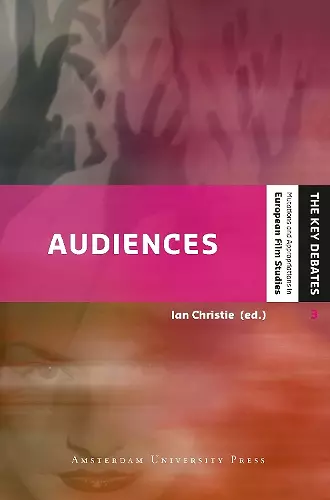Audiences
Defining and Researching Screen Entertainment Reception
Format:Paperback
Publisher:Amsterdam University Press
Published:6th Nov '12
Currently unavailable, and unfortunately no date known when it will be back

This non-fiction paperback, "Audiences" from Ian Christie, was published 6th November 2012 by Amsterdam University Press.
ISBN: 9789089643629
Dimensions: unknown
Weight: 521g
334 pages